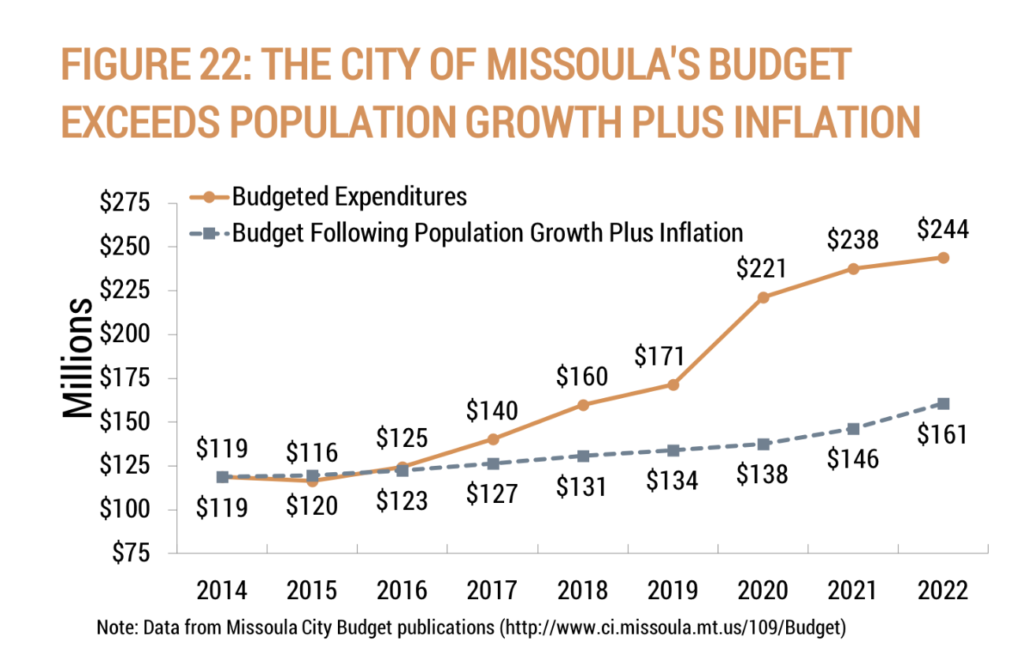Montana’s Two Different Tax Realities
"This excess in spending means taxpayers will have to pick up the difference."
“Instead of protecting taxpayers by putting firm limits on spending growth, some of our major local governments are busy spending record amounts of taxpayer dollars.” – Frontier President & CEO, Kendall Cotton
Montanans are seeing two different realities play out today, one in which some taxes are going up and another in which other taxes are going down. But why is this happening?
Frontier President & CEO, Kendall Cotton explained the situation in his most recent column.
During the 2021 Legislative Session, Republicans and Governor Gianforte worked together to secure a Conservative Montana Budget, a budget model we have been strong advocates of. Implementing a budget that grew less than population growth plus inflation has allowed for major taxpayer savings.
“Firm limits on new spending in the state budget made room for historic tax relief, cutting taxes for low and high income Montanans alike. Starting in 2024, tens of thousands of low-income Montana households will be dropped from tax rolls completely, meaning they won’t even have to file income taxes.”
This fiscal responsibility has led to a massive surplus, enabling Gov. Gianforte’s administration to prioritize further “permanent, long-term” tax relief for the upcoming 2023 Legislature. While this is sure to be welcome news in the face of record inflation, the story at the local level isn’t quite as rosy.
Why? Local governments continue to propose record tax increases due to an unwillingness to limit the growth of spending.
Take for example Missoula, the city’s spending has significantly outpaced population growth plus inflation.
This excess in spending means taxpayers will have to pick up the difference.
Montana’s state government is showing how to make tax relief successful. Local governments need to follow that example. Permanent, long-term tax relief is made possible only through a commitment to spending restraint.
For Liberty,
Tanner Avery
The Latest
Forest Management Requires ‘Good’ Fire
In this month’s forest management column, PERC Policy Director, Hannah Downey explains how the proactive forest management strategy, known as prescribed burning, helped to make this year’s fire season more manageable.
“Prescribed burns, especially done in conjunction with mechanical treatments, proved their value as a proactive tool in controlling wildfires in Montana this summer.”
A Step Toward Universal Licensure
Earlier last week, Governor Gianforte announced his plan to improve health care access and lower costs for Montanans. A major component of his plan is to reduce licensing barriers that create unnecessary hoops out of state healthcare providers must go through in order to work in Montana.
Our Take: For far too long Montana has faced a critical shortage of healthcare workers. Proposals to remove barriers that prevent qualified health care workers from practicing in Montana, such as what the Governor has proposed, could go a long way in expanding access to care in Montana.

Positioning Montana As An Energy Abundant State
Portland General Electric announced it is buying a share of Clearwater Wind, Montana’s largest wind farm. The wind farm is a little over 20 miles northwest of Miles City. The deal announced this Tuesday will start drawing power from the wind farm at the end of 2023. PGE’s CEO stated this acquisition will help in their transition away from coal-fired plants.
Our Take: This is further evidence that Montana is well positioned to become a renewable energy exporter while reserving more affordable, and reliable energy for Montanans. We should take advantage of the growing demand for energy by reducing barriers to all forms of energy generation.
